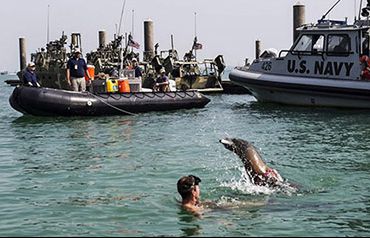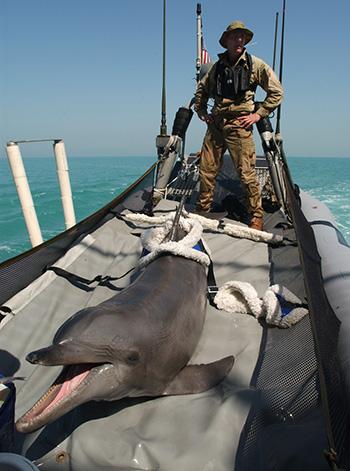Bangor was the name of a base, incorporated by Kitsap into the 2004. This means that the largest nuclear arsenal in the United States, perhaps in the world, is protected by dolphins.
In the official note of the US Navy, the use of dolphins in defense of the waters around the base since May of the 2010 is confirmed. Before that, a team of sea lions trained to detect unwanted swimmers was used.
The US military currently has 85 service on dolphins and 50 trained sea lions for different types of missions: port surveillance, mine clearance and equipment recovery.
The program was declassified only in the 1990.
According to the US Navy, no mammal has ever been trained to kill.
Dolphins, Sea Lions and Orcas: natural killers at the service of the military
The "Combat Dolphin Program" which includes the training of dolphins for war purposes in the Sevastopol aquarium, in Crimea, was incorporated into the Russian Navy in March of the 2014.
The Ukrainian defense ministry, 13 February last year, announced the closure of the program due to lack of funds.
The annexation of the peninsula by Moscow has upset the previous directives of Kiev. Indeed, the Russian defense ministry has the necessary funds and know-how to increase the capacity of Ukrainian dolphins, equipped with obsolete equipment.
Moscow has been training and using sea lions for decades to protect its coasts from enemy enemies.
The Sevastopol aquarium is one of the two centers in the world for fighting dolphin training. The other is managed by the US Navy, in San Diego, in the Marine Mammal Program.
According to the official websites of the Ukrainian navy, the dolphin training aquarium for the Soviet navy dates back to the 1960. They have been trained both to detect military equipment at the bottom of the sea and to attack sub-enemies.
In the 1980, training included anti-sabotage and rescue operations. After the collapse of the Soviet Union, the entire dolphin training section and its specialists switched to the Ukrainian navy. They were then used for civil tasks (such as the treatment of some childhood neurological diseases), in order to keep the unit intact.
In the 2011, the Ukrainian defense ministry has restarted the specific formation of dolphins for combat. If the annexation with the Russian federation had taken place a few weeks later, the mammals would have already been sold to the aquariums of the planet by March. Moscow would therefore have missed the opportunity to absorb dolphins in its ranks, considering the excellence of the structure and its uniqueness, finding an empty aquarium.
Only a mere coincidence has given the Russians the ability to increase their "animal military" component in an area not yet able to defend themselves against Western naval forces.
 Marine Mammal Program
Marine Mammal Program
The US Navy uses five teams of marine mammals, each with a specific mission profile. Each team, consisting of a man and an animal, is known in the jargon with the acronym MK followed by a number. The MK 4,7 and 8 teams use only dolphins. The MK 5 team uses sea lions while the MK 6 uses both mammals.
Teams can be deployed with up to 72 hours notice worldwide.
Dolphins have been used in Vietnam for ten years, in the 1996 during the Republican National Convention in San Diego and in the 2003 in the Persian Gulf.
Franco Iacch
(photo: US Navy)












